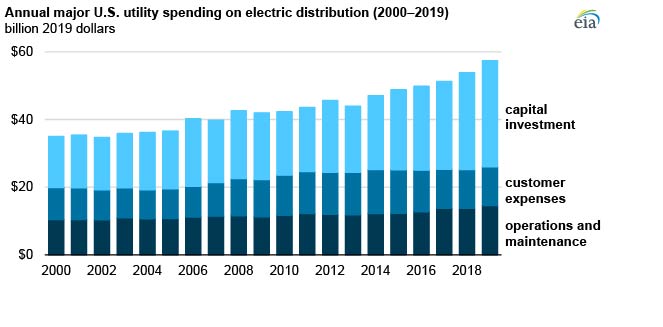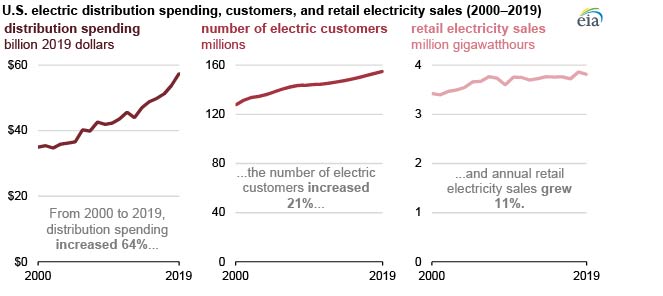
Annual spending on electricity distribution systems by major U.S. utilities continues to increase. Utilities spent $57.4 billion on electric distribution in 2019, 6% more than the previous year and 64% more than they spent in 2000 after adjusting for inflation. More than half of utility distribution spending in 2019 went toward capital investment ($31.4 billion) as utilities worked to replace, modernize, and expand existing infrastructure. Another $14.6 billion paid for operations and maintenance (O&M), and $11.5 billion went to customer expenses, which include advertising, billing, and customer service.
Distribution is the final stage in delivering electricity to consumers. The distribution system connects to the high-voltage transmission system, lowers the transmission voltage, and carries the electricity to homes and businesses on distribution lines. The electricity distribution system includes neighborhood power lines, poles and towers, line transformers, meters that measure customer electricity use, and station equipment that lowers the voltage from the long-distance transmission system.
In 2019, most of the $31.4 billion distribution system capital investment (40%) was spent on power lines, both underground (23% of investment) and overhead (17% of investment). Distribution lines are added or expanded to accommodate new neighborhood development or higher electricity flows as sales increase.
Operations and maintenance of overhead lines cost $7.3 billion and made up the bulk of O&M expenses in 2019. Vegetation management and tree trimming; animal protection; line testing for strength, temperature, voltage and frequency; and repairs due to storms or faults accounted for much of this expense.



Follow us on social media: